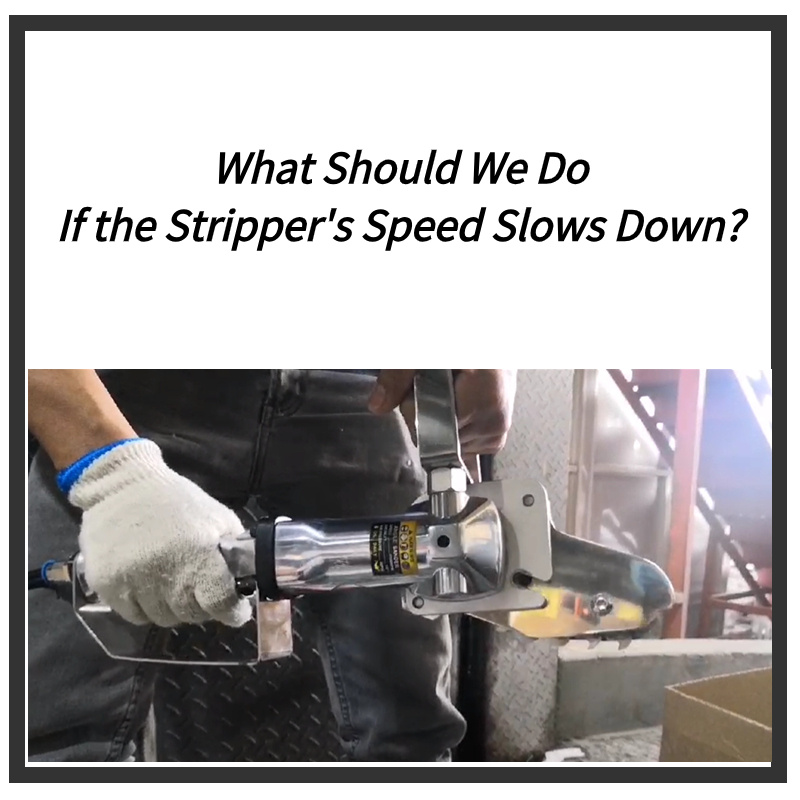What Should We do If the Waste Stripper's Speed Slow Down?
Paper carton waste strippers are essential tools in the packaging industry, designed to efficiently remove waste from die-cut materials. However, users may encounter common issues that hinder the smooth operation of these devices.
From decreased speed to difficulties in waste stripping, troubleshooting and proper maintenance are crucial to ensure optimal performance. In this comprehensive guide, we will explore a range of troubleshooting techniques and maintenance practices to help resolve common issues and extend the life of your paper carton waste strippers.
Section 1: Troubleshooting Common Issues
1.1 Identifying Decreased Speed: When your waste stripper begins to operate at a slower speed than usual, several factors may be at play. Consider the following steps to troubleshoot this issue:
-
Check the Air Compressor: Start by assessing the power of the air compressor connected to the waste stripper. Make sure the air compressor is set to a minimum of 6KG (kilograms). Insufficient power can significantly affect the performance of the pneumatic stripping device. Adjust the power settings accordingly and observe any improvements in speed.
-
Inspect the Air Hose: Examine the air hose for any damages, leaks, or blockages. A damaged or obstructed air hose can hamper the airflow, resulting in decreased speed. If the air hose shows signs of wear and tear, replace it with a new one to maintain optimal airflow to the waste stripper.
-
Clean the Stripping Device: Over time, dirt, debris, and paper waste can accumulate inside the stripping device, leading to decreased speed. Disassemble the device, carefully clean all components, and remove any obstructions inside the device. Regular cleaning of the stripping device is recommended to prevent clogging and ensure smooth operation.
1.2 Addressing Difficulty in Waste Stripping: If you encounter challenges in effectively removing waste from die-cut materials, consider the following troubleshooting steps:
-
Check the Blade Condition: Inspect the condition of the blade responsible for cutting waste. Make sure the blade is sharp and not dull, as a dull blade can make waste stripping more challenging. If needed, sharpen or replace the blade to ensure efficient waste removal.
-
Examine the Stripping Chain: The stripping chain plays a vital role in holding and removing waste. Inspect the chain for any signs of wear, breakage, or misalignment. If the chain is damaged, replace it with a new one to restore smooth stripping functionality.
-
Adjust the Stripping Gap: The stripping gap refers to the space between the stripping roller and the cutting plate. An incorrect stripping gap can result in difficulties in waste stripping. Verify that the stripping gap is properly adjusted according to the specifications provided by the manufacturer. Adjusting the stripping gap can improve the efficiency of waste removal.
Section 2: Maintenance Practices for Longevity and Effectiveness
2.1 Lubrication and Cleaning:
Regular lubrication and cleaning are essential for maintaining the optimal performance of paper carton waste strippers. Here are some important maintenance practices to consider:
-
Lubricate Moving Parts: Periodically lubricate the moving parts of your waste stripper, such as the chains, gears, and bearings. Apply a suitable lubricant recommended by the manufacturer to reduce friction, prevent rust, and ensure smooth operation.
-
Clean the Stripping Components: Clean the stripping components, including the chains, gears, and stripping roller, regularly to remove accumulated debris or waste. Use a soft brush or cloth to gently clean and prevent any buildup that may hinder proper functioning.
-
Inspect Electrical Connections: If your waste stripper features electric components, regularly inspect the electrical connections for any loose or frayed wires. Secure any loose connections and replace damaged wires to prevent electrical malfunctions.
2.2 Regular Inspections and Replacements:
To maintain the longevity and effectiveness of your waste stripping tool, perform regular inspections and initiate timely replacements when necessary:
-
Inspect Chain Tension: Check the tension of the stripping chain frequently. If the chain is loose or overly tight, adjust it accordingly to ensure optimal performance. Improper chain tension can result in irregular waste stripping and decrease the lifespan of the chain.
-
Replace Worn-out Components: Over time, certain parts of the waste stripper, such as the stripping chain, gears, or blade, may experience wear and tear. Regularly inspect these components, and replace any damaged or worn-out parts to maintain maximum performance.
-
Conduct Performance Evaluation: Periodically evaluate the overall performance of your waste stripper. Monitor its speed, efficiency in waste stripping, and any unusual noises or vibrations. Address any issues promptly to prevent further damage and maintain optimal operational conditions.
Conclusion:
Paper carton waste strippers play a vital role in efficient waste removal from die-cut materials. When encountering common issues such as decreased speed and difficulties in stripping waste, troubleshooting techniques such as verifying the air compressor's power and inspecting the stripping device can help identify and resolve underlying problems.
Additionally, regular maintenance practices, including lubrication, cleaning, and inspections, are crucial for ensuring the longevity and effectiveness of your waste stripping tool. Following these guidelines, you can optimize the performance of your paper carton waste strippers and enhance productivity within the packaging industry.
 SHENZHEN CHAOYI MACHINE CO.,LTD
SHENZHEN CHAOYI MACHINE CO.,LTD


